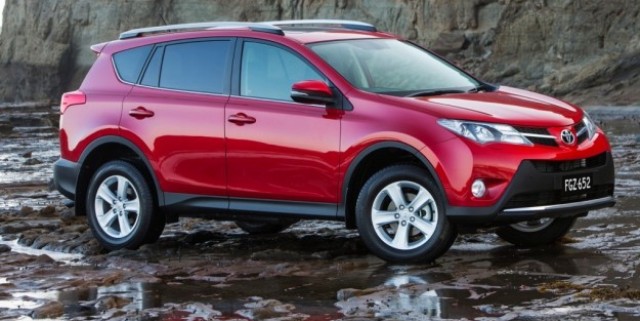
The fourth-generation 2013 Toyota RAV4 represents an entirely new approach to building and marketing the Japanese compact SUV. It features a new look, ditches the barn-door rear tailgate for the first time, and offers the option of a diesel engine. But in the SUV segment, the war for market share is fierce, so how does the new Toyota RAV4 stack up?
There is little relating the new Toyota RAV4 to its predecessor from the outside. It would be basically impossible to tell its make or model if not for the badges and the design similarities it shares with the recently launched Toyota Corolla.
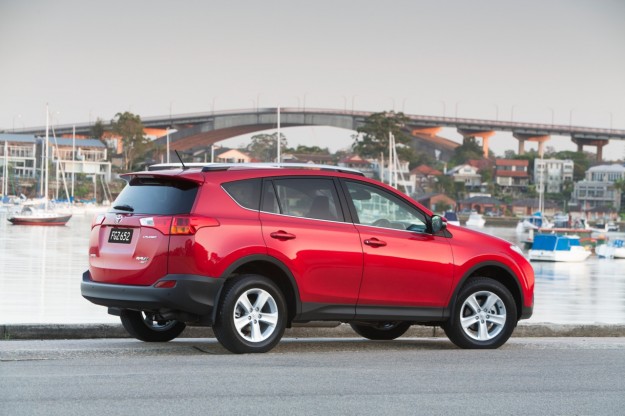
Side by side with the small car, the new RAV4 almost looks like a Corolla on stilts. The familiar design translates well and though it looks a little edgy and overdone in photos, in real life, particularly in certain colours (such as deep green), it’s a sharp-looking design.
Prices for the medium-sized SUV start from $28,490, a $500 reduction on the outgoing model. There are 16 variants comprising three engine options, three transmissions and three equipment grades.
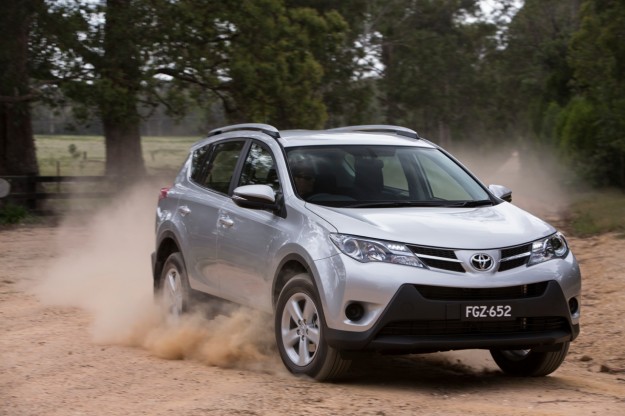
The cheapest way into a RAV4 is the GX front-wheel drive, which is powered by a Corolla-derived 2.0-litre four-cylinder petrol engine that produces 107kW of power and 187Nm of torque. When coupled to a six-speed manual it sips a claimed 7.7 litres of fuel per 100km. Tick the $2500 option for the continuously variable transmission (CVT auto) and that fuel claim rises to 7.9L/100km.
The next model up, which is likely to account for the majority of RAV4 sales, is the 2.5-litre four-cylinder petrol all-wheel drive, which produces a more substantial 132kW and 233Nm and starts from $31,990 for the six-speed manual.
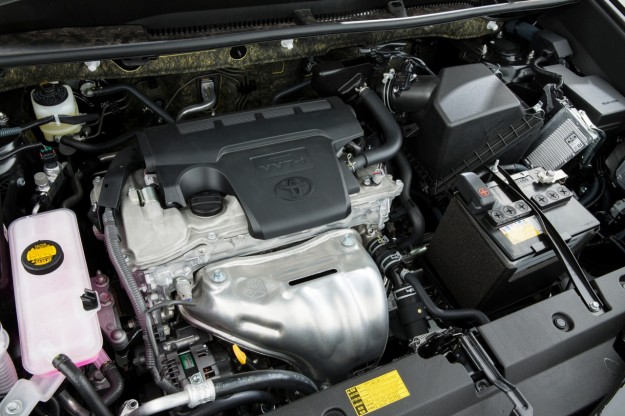
Toyota has decided to offer a traditional six-speed automatic (instead of the CVT) for its AWD models, but the extra cost remains the same $2500 as the CVT. Fuel economy is 8.6L/100km for the manual AWD, and 8.7L/100km for the auto AWD.
The big news is the Toyota RAV4 diesel, which marks the first time the RAV4 has been offered with a diesel engine in Australia. The engine also makes its Australian debut, having already been put to use overseas in the Corolla and the Lexus IS200d.
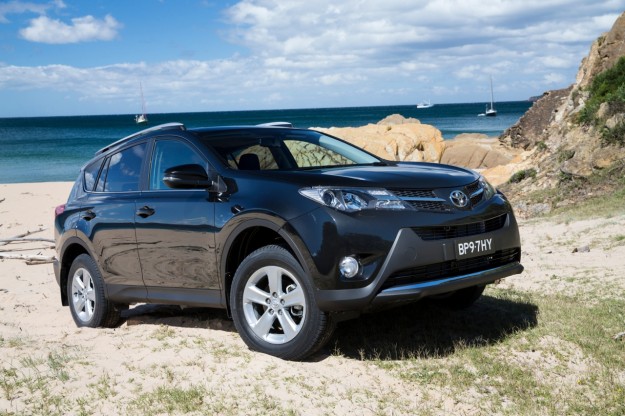
The 2.2-litre turbo-diesel produces 110kW and 340Nm – figures shy of the competition, particularly the Koreans, but more than adequate to get the RAV4 moving along with enthusiasm.
In traditional Toyota fashion, none of the engines offer benchmark power and torque. The diesel does, however, present an interesting economy story, using just 5.6L/100km in manual form and 6.5L/100km when coupled to a traditional six-speed automatic.
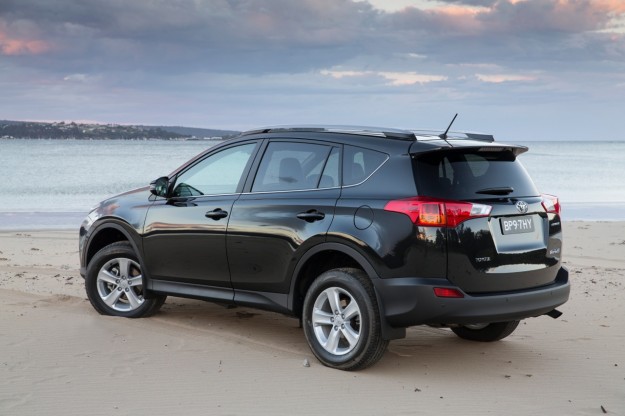
In terms of pricing, the RAV4 diesel matches the entry price of the Subaru Forester diesel at $35,490 ($2500 more for automatic) and undercuts other oilers like the Mitsubishi Outlander.
Technical details aside, the new RAV4 is a very practical and usable family SUV. Toyota predicts that 78 per cent of buyers will be couples of which 58 per cent will have no kids. For the other 42 per cent, the new RAV4 has Isofix seat anchors that will make using the soon-to-be-approved European child seat anchor system a joy for parents.

It has pretty decent cargo space, too, measuring 577 litres when a space-saver spare wheel is selected or 506L with the optional full-size spare ($300). Speaking of which, the spare wheel has moved from its traditional location on the tailgate to under the cargo floor. The tailgate is also now top hinged for easier access.
The interior is, as expected, typical Toyota. It’s certainly taken a step forward in quality and the general touch and feel is far better than its predecessor. There is, however, a lot of old-school styling elements and dated technology in the cabin.
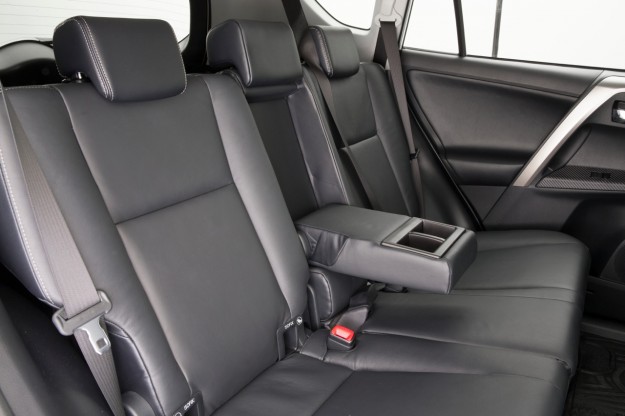
One can’t miss the now almost retro-style digital clock or the double-deck audio system, which would welcome a more modern approach (though it can be easily replaced with an aftermarket system). Toyota’s philosophy of putting reliability and proven technology ahead of all else has no doubt played a role in such decisions. Keeping things simple ensures long term reliability, clearly.
The new Toyota RAV4 measures 10mm narrower, 55mm shorter and 15mm lower than its predecessor. Nonetheless, it has gained 41mm of additional leg room for rear passengers thanks to a redesign of the front seats, which have been reset for a more natural driving position. The telescopic steering wheel is also a new and welcome addition. You can fit five adults inside without too much hassle.
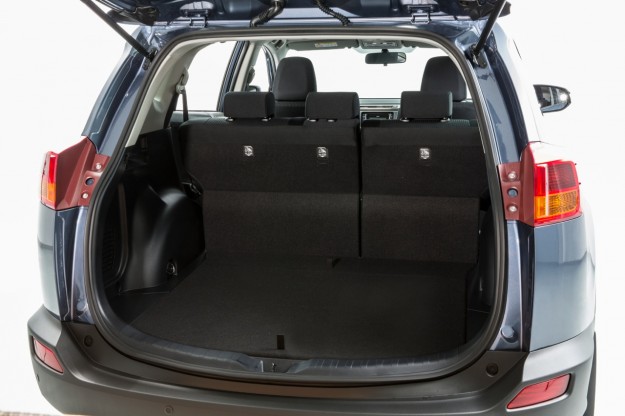
The six-speaker audio system is not too bad and comes standard across the range with Bluetooth connectivity. Surprisingly the speaker system doesn’t change as you step up through the model range, only the actual head unit, which gains a colour screen in the mid-range GXL and satellite navigation in Cruiser variants.
Behind the wheel the Toyota RAV4 range is a mixed bag. The base model 2.0-litre front-wheel-drive variants are hindered by a CVT that tends to struggle with power extraction (making the manual the ideal choice in this case). Although likely to provide more than enough oomph for most buyers, there’s an underlying feeling that it could do with much more go. Planting the right foot results in almost no reaction in hilly terrain. If you can afford the upgrade to the 2.5-litre petrol, it’s certainly worth it.
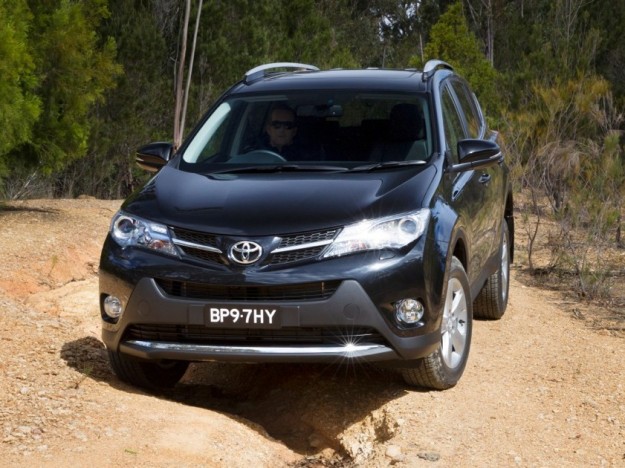
The AWD 2.5-litre drivetrain is the pick of the bunch. It has more than enough power to get the RAV4 up to speed and the six-speed automatic does a much better job of providing an enjoyable driving experience compared with the CVT. It’s also a gem when coupled to a manual.
That leaves us with the diesel, which should ideally be the pick of any SUV range, but in the RAV4 it has a few shortcomings. Firstly, on the power numbers alone, it struggles to keep up with the competition. Secondly, there’s a major towing issue.
Even though the majority of buyers are unlikely to tow anything with their RAV4, the thought of being able to (or knowing one can) is comforting. The 2.0-litre petrol RAV4 has a braked towing capacity of 800kg and the 2.5-litre petrol takes that up to 1500kg (braked). The diesel is rated at just 500kg (or 550kg with the manual).
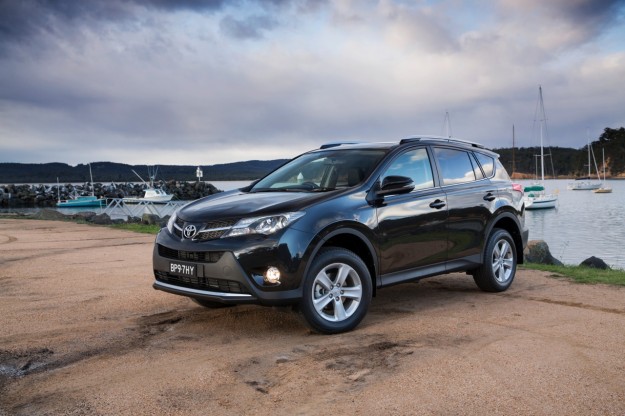
By comparison, the Toyota Yaris beats that by 50kg. The Subaru Forester diesel, meanwhile, pulls 1600kg (braked).
Toyota says Australia’s ‘extreme’ conditions are the reason for the limited towing capability. Toyota Japan was so concerned with the average temperatures in Australia that it didn’t want to risk the reliability of its diesel engine, and hence its reputation. The exact same car has 2000kg towing capacity in other markets (including New Zealand). So it’s not an inability of the diesel engine, just an extreme insistence on ensuring reliability above all else.

Taking the towing issue out of the equation, the diesel is certainly worth a look – with smooth power delivery and effortless pull, it’s arguably the best RAV4 yet. Plus there’s a chance that Toyota may in the future increase its towing capacity after further local testing.
The driving dynamics of the RAV4 have also been improved, with a new and smarter AWD system and a Sport mode (standard on all except base model GX manual) that tries its best to make a non-sporty SUV, well, sporty.

The Toyota RAV4’s chief engineer proudly owns 18 cats, which he says served as an inspiration for the RAV4’s agility and sure-footedness. Though we weren’t game to see how many lives the RAV had, there’s no doubt the new car is a massive improvement over its predecessor when it comes to driving dynamics.
The ride quality is a tad harder than one might expect but that leaves it with ideal handling ability, a trade-off worth having if you have a fondness for driving.
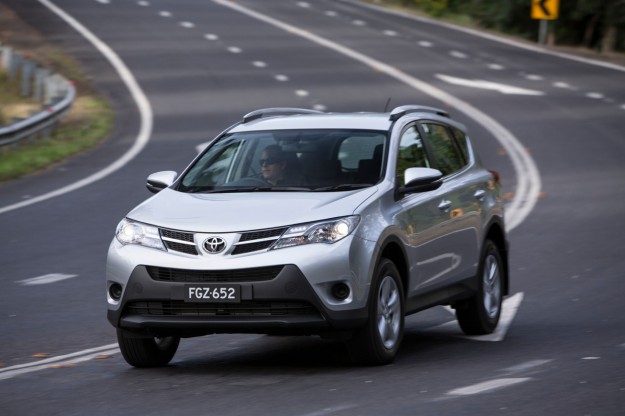
Sport mode artificially increases the steering weight by about 20 per cent, and tunes the accelerator for a sharper response. It also ‘blips’ the throttle on downshifts, which would have been a useful feature if the RAV4 had paddle-shifters.
Around corners the RAV4 behaves amicably, sitting flat and providing a decent amount of steering feedback.
Toyota, not shy of showing off its off-road credentials, sent us to a decent four-wheel-drive course in Merimbula to prove the new RAV4’s versatility (AWD models). Sure enough, the RAV4, with its hill descent control and brake assist systems performs well when it comes to a bit of off-roading – though we’re not sure how many buyers will subject their new RAV4s to such conditions.
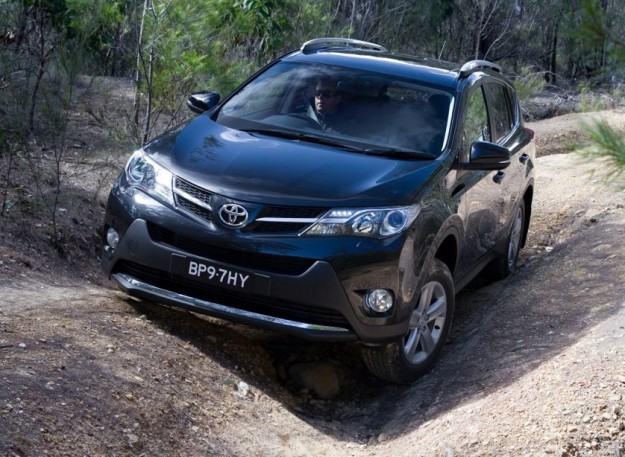
It doesn’t exactly have a high ground clearance but the RAV4 will eat up any beach or dirt track without hesitation.
The smarter AWD system also tends to help with such conditions, using a whole bunch of sensors and a smart computer to control power to the front and rear axles (up to 50:50). The majority of the time the RAV4 AWD sends its might to the front (to save fuel) but it can, almost instantly, move that around as needed.
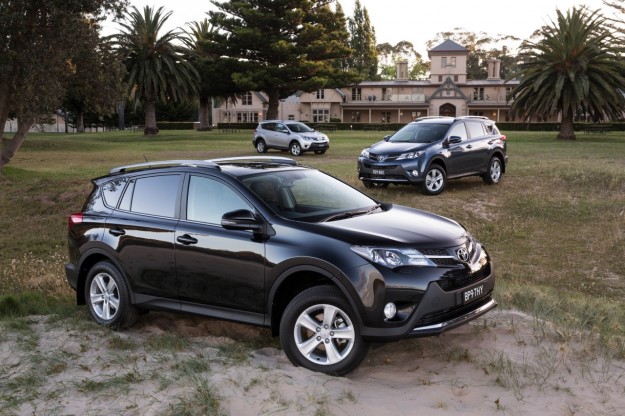
On the safety front, seven airbags and all the usual electronic active safety controls have been fitted to the RAV4 range. The base model misses out on a reversing camera (but gets rear sensors), and the whole range is expected to get the maximum five-star ANCAP safety rating with it gets tested in a few months.
All models are covered by capped-price Toyota Service Advantage, so you’ll pay no more than $170 per service for the first six services (10,000km/six-month intervals) across the range.
The new Toyota RAV4 is a far better SUV than its predecessor, offering proven Toyota reliability with fixed-price servicing as well as a practical and well equipped package overall.





